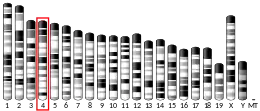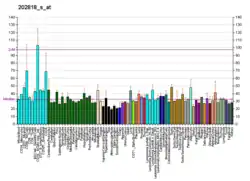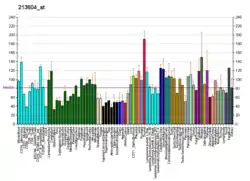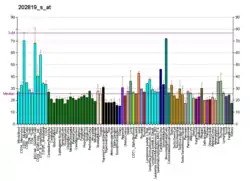| ELOA | |||||||||||||||||||||||||||||||||||||||||||||||||||
|---|---|---|---|---|---|---|---|---|---|---|---|---|---|---|---|---|---|---|---|---|---|---|---|---|---|---|---|---|---|---|---|---|---|---|---|---|---|---|---|---|---|---|---|---|---|---|---|---|---|---|---|
| |||||||||||||||||||||||||||||||||||||||||||||||||||
| Identifiers | |||||||||||||||||||||||||||||||||||||||||||||||||||
| Aliases | ELOA, EloA, SIII, SIII p110, TCEB3A, TCEB3, transcription elongation factor B subunit 3, elongin A | ||||||||||||||||||||||||||||||||||||||||||||||||||
| External IDs | OMIM: 600786 MGI: 1351315 HomoloGene: 37746 GeneCards: ELOA | ||||||||||||||||||||||||||||||||||||||||||||||||||
| |||||||||||||||||||||||||||||||||||||||||||||||||||
| |||||||||||||||||||||||||||||||||||||||||||||||||||
| |||||||||||||||||||||||||||||||||||||||||||||||||||
| |||||||||||||||||||||||||||||||||||||||||||||||||||
| |||||||||||||||||||||||||||||||||||||||||||||||||||
| Wikidata | |||||||||||||||||||||||||||||||||||||||||||||||||||
| |||||||||||||||||||||||||||||||||||||||||||||||||||
Elongin A is a protein that in humans is encoded by the ELOA gene.[5][6][7]
Elongin A is a subunit of the transcription factor B (SIII) complex. The SIII complex is composed of elongins A/A2, B and C. It activates elongation by RNA polymerase II by suppressing transient pausing of the polymerase at many sites within transcription units. Elongin A functions as the transcriptionally active component of the SIII complex, whereas elongins B and C are regulatory subunits. Elongin A2 is specifically expressed in the testis and is capable of forming a stable complex with elongins B and C. The von Hippel–Lindau tumor suppressor protein binds to elongins B and C and thereby inhibits transcription elongation.[7]
References
- 1 2 3 GRCh38: Ensembl release 89: ENSG00000011007 - Ensembl, May 2017
- 1 2 3 GRCm38: Ensembl release 89: ENSMUSG00000028668 - Ensembl, May 2017
- ↑ "Human PubMed Reference:". National Center for Biotechnology Information, U.S. National Library of Medicine.
- ↑ "Mouse PubMed Reference:". National Center for Biotechnology Information, U.S. National Library of Medicine.
- ↑ Aso T, Mokady N, Haque D, Conaway RC, Conaway JW (Mar 1996). "Assignment of a human gene encoding the 110-kDa subunit of general transcription factor elongin (SIII) to chromosome 1p36.1". Genomics. 30 (2): 393–4. PMID 8586449.
- ↑ Aso T, Lane WS, Conaway JW, Conaway RC (Oct 1995). "Elongin (SIII): a multisubunit regulator of elongation by RNA polymerase II". Science. 269 (5229): 1439–43. Bibcode:1995Sci...269.1439A. doi:10.1126/science.7660129. PMID 7660129. S2CID 37649908.
- 1 2 "ELOA elongin A [ Homo sapiens (human) ]".
Further reading
- Shilatifard A (1998). "Factors regulating the transcriptional elongation activity of RNA polymerase II". FASEB J. 12 (14): 1437–46. doi:10.1096/fasebj.12.14.1437. PMID 9806752. S2CID 17435359.
- Kile BT, Schulman BA, Alexander WS, et al. (2002). "The SOCS box: a tale of destruction and degradation". Trends Biochem. Sci. 27 (5): 235–41. doi:10.1016/S0968-0004(02)02085-6. PMID 12076535.
- Aso T, Haque D, Fukudome K, et al. (1996). "A human cDNA encoding the 110-kDa A subunit of RNA polymerase II transcription factor elongin". Gene. 168 (2): 277–8. doi:10.1016/0378-1119(95)00750-4. PMID 8654961.
- Pan G, Aso T, Greenblatt J (1997). "Interaction of elongation factors TFIIS and elongin A with a human RNA polymerase II holoenzyme capable of promoter-specific initiation and responsive to transcriptional activators". J. Biol. Chem. 272 (39): 24563–71. doi:10.1074/jbc.272.39.24563. PMID 9305922.
- Ohh M, Takagi Y, Aso T, et al. (2000). "Synthetic peptides define critical contacts between elongin C, elongin B, and the von Hippel-Lindau protein". J. Clin. Invest. 104 (11): 1583–91. doi:10.1172/JCI8161. PMC 481054. PMID 10587522.
- Kamura T, Burian D, Yan Q, et al. (2001). "Muf1, a novel Elongin BC-interacting leucine-rich repeat protein that can assemble with Cul5 and Rbx1 to reconstitute a ubiquitin ligase". J. Biol. Chem. 276 (32): 29748–53. doi:10.1074/jbc.M103093200. PMID 11384984.
- Shaheduzzaman S, Krishnan V, Petrovic A, et al. (2002). "Effects of HIV-1 Nef on cellular gene expression profiles". J. Biomed. Sci. 9 (1): 82–96. doi:10.1007/BF02256581. PMID 11810028.
- Yamazaki K, Guo L, Sugahara K, et al. (2002). "Identification and biochemical characterization of a novel transcription elongation factor, Elongin A3". J. Biol. Chem. 277 (29): 26444–51. doi:10.1074/jbc.M202859200. PMID 11994304.
- Strausberg RL, Feingold EA, Grouse LH, et al. (2003). "Generation and initial analysis of more than 15,000 full-length human and mouse cDNA sequences". Proc. Natl. Acad. Sci. U.S.A. 99 (26): 16899–903. Bibcode:2002PNAS...9916899M. doi:10.1073/pnas.242603899. PMC 139241. PMID 12477932.
- Tamura K, Miyata K, Sugahara K, et al. (2003). "Identification of EloA-BP1, a novel Elongin A binding protein with an exonuclease homology domain". Biochem. Biophys. Res. Commun. 309 (1): 189–95. doi:10.1016/S0006-291X(03)01556-0. PMID 12943681.
- Stoletov KV, Terman BI (2004). "Bmx is a downstream Rap1 effector in VEGF-induced endothelial cell activation". Biochem. Biophys. Res. Commun. 320 (1): 70–5. doi:10.1016/j.bbrc.2004.05.134. PMID 15207703.
- Beausoleil SA, Jedrychowski M, Schwartz D, et al. (2004). "Large-scale characterization of HeLa cell nuclear phosphoproteins". Proc. Natl. Acad. Sci. U.S.A. 101 (33): 12130–5. Bibcode:2004PNAS..10112130B. doi:10.1073/pnas.0404720101. PMC 514446. PMID 15302935.
- Gerhard DS, Wagner L, Feingold EA, et al. (2004). "The status, quality, and expansion of the NIH full-length cDNA project: the Mammalian Gene Collection (MGC)". Genome Res. 14 (10B): 2121–7. doi:10.1101/gr.2596504. PMC 528928. PMID 15489334.
- Andersen JS, Lam YW, Leung AK, et al. (2005). "Nucleolar proteome dynamics". Nature. 433 (7021): 77–83. Bibcode:2005Natur.433...77A. doi:10.1038/nature03207. PMID 15635413. S2CID 4344740.
- Rual JF, Venkatesan K, Hao T, et al. (2005). "Towards a proteome-scale map of the human protein-protein interaction network". Nature. 437 (7062): 1173–8. Bibcode:2005Natur.437.1173R. doi:10.1038/nature04209. PMID 16189514. S2CID 4427026.
- Woo JS, Imm JH, Min CK, et al. (2006). "Structural and functional insights into the B30.2/SPRY domain". EMBO J. 25 (6): 1353–63. doi:10.1038/sj.emboj.7600994. PMC 1422157. PMID 16498413.
This article is issued from Wikipedia. The text is licensed under Creative Commons - Attribution - Sharealike. Additional terms may apply for the media files.






